This article was co-authored by Monica Morris and by wikiHow staff writer, Dan Hickey. Monica Morris is an ACE (American Council on Exercise) Certified Personal Trainer based in the San Francisco Bay Area. With over 15 years of fitness training experience, Monica started her own physical training practice and gained her ACE Certification in 2017. Her workouts emphasize proper warm-ups, cool-downs, and stretching techniques.
There are 23 references cited in this article, which can be found at the bottom of the page.
This article has been viewed 124,030 times.
Sudden, unexpected muscle twitches can be jarring or annoying—is there any way to stop them once they strike? The vast majority of twitches are harmless and painless, but there’s lots you can do to make them pass faster or keep them from happening at all. In this article, we’ll walk you through the best ways to stop and prevent muscle twitches, plus review the most likely causes. If you’re ready to steady your muscles, keep scrolling!
Things You Should Know
- Massage or stretch twitching muscles for fast relief. Drink pickle juice, or use ice, heating pads, or NSAIDs like ibuprofen to help soothe your muscles, too.
- Prevent twitches with good hydration and sleep, regular exercise, and a balanced diet that provides plenty of calcium, potassium, and magnesium.
- See a doctor if your twitching is frequent, lasts more than a few minutes at a time, or interferes with your ability to sleep or work.
Steps
Treating Muscle Twitches Fast
-
1Massage the twitch with light pressure. Relax the twitching muscle as much as possible and use your fingers to gently push and rub circles over the center of the twitch. Target any other stiff or tender areas, too. This will help release tension, provide relief from the twitching, and return range of motion.[1]
- Massaging also increases blood flow and oxygen to your muscles which helps them relax and stop spasming.
-
2Stretch twitching muscles in the opposite direction of their contraction. Hold stretches for 10-30 seconds at a time, giving yourself breaks in between if more than one is needed. Only stretch as far as is comfortable—pushing past your limit might result in injury (and won’t stop the twitch).[2]
- Hands and fingers: Spread your fingers wide apart. Slowly curl them into a loose fist, hold for a few seconds, then open them again (repeat 5-10 times).[3]
- Thumbs: Make a “thumbs up” position and rotate your thumb in circles for a few seconds, then switch directions (repeat 3-4 times).
- Arms and shoulders: Pull the twitching arm across your chest and hold it in place with your opposite hand. Repeat 3 times for 30 seconds each.[4]
- Calves and feet: Sit down and pull your toes toward you with your knees straight. If you’re in bed, sit up, loop a blanket around your toes, and pull.[5]
- Shins and front ankle tendon: Stand up, put your weight on your toes, and lift your heels.
- Hamstrings: Sit on the floor with your legs in front of you. Slide your hands down your legs until you feel tension in the muscle. Hold for 30 seconds.[6]
- Back: Perform Child’s Pose—kneel and sit on your knees, then lean forward so your buttocks are resting on your heels and your forehead’s on the floor.
- Neck: Tilt one ear downwards towards your shoulder until you feel a stretch in the side of your neck. Rest with your head upright and repeat as needed.[7]
Advertisement -
3Drink 2⁄3 cup (160 mL) of pickle juice. Down the juice and let it hit the back of your throat. The acetic acid stimulates a throat reflex that decreases activity in the alpha motor neurons, which causes muscle relaxation. If you hate pickle juice, you don’t even have to swallow it![8]
- Twitches, cramps, or spasms will probably stop 3-4 minutes after drinking the juice.
- Pickle juice also improves your electrolyte balance, which can help prevent twitches in the future.
- No pickle juice on hand? Try eating a banana instead—the potassium will help stop twitching, especially in small muscles like your eyelids or lips.[9]
-
4Apply ice or heat if the twitch is painful. Use cold therapy if the twitch includes acute pain—wrap the muscle in a towel and gently apply a cold compress or bag of ice. If the muscle is sore or tense, use heat—apply a heating pad on a low setting, or stand in the shower with a gentle stream of warm water spraying the twitching muscle.[10]
- Limit hot and cold treatments to 15-20 minutes at a time (repeating every 2 hours if needed).
- Never apply ice directly to your bare skin.
-
5Use over-the-counter remedies like NSAIDs. If your twitch is accompanied by inflammation or pain, try using nonsteroidal anti-inflammatory drugs (NSAIDs) like ibuprofen (Advil or Motrin) or naproxen (Aleve). Always read the warning label on NSAIDs or other medications if you’re on a prescription and not sure if you should mix medicines.[11]
- NSAIDs will treat pain if you have it, but may not stop the actual twitching or treat the underlying cause.
-
6Wait for the twitching to pass if nothing else works. Get in a comfortable position if you’re in pain—most of the time, twitches are more bizarre or uncomfortable than painful, but experiences range from small ticks to tight cramps. Most twitches only last for a few seconds or minutes before going away on their own.[12]
- A twitch or spasm might recur a few times before it goes away for good.
- Twitching after you work out is normal since your muscles are just trying to release tension.[13]
-
7See a doctor when twitches don’t go away or affect your daily life. Most twitches disappear on their own, but schedule a doctor appointment if they happen frequently and other self-care methods don’t fix them.[14] Seek help if they’re accompanied by discomfort, swelling, redness, muscle weakness, or injury.[15]
- Describe the frequency, severity, and possible causes in as much detail as you can to help your doctor diagnose a deeper problem.
- Your doctor may prescribe treatment for an underlying condition, like a vitamin deficiency, after running some tests.
- Sometimes, a doctor may prescribe medication to treat the twitches specifically if another cause can’t be found.
Preventing Muscle Twitches
-
1Get a good night’s sleep every night. Get in a relaxing pre-sleep routine that includes things like a bath, reading, or meditating and keep your bedroom quiet, dark, and cool. Try to keep your schedule consistent by going to bed and waking up at the same time each day.[16]
-
2Manage your stress to stay calm and relaxed. Exercise regularly, eat a diet with lots of produce and whole grains, and avoid excessive smoking or drinking to release physical stress. Try meditating or yoga to focus your breath and clear your mind. Schedule time to connect with your loved ones and make a point to laugh more—it’s the best medicine, after all![18]
- Pursue some of your creative interests or hobbies to let off steam, like playing an instrument, gardening, or sewing.
- Try journaling or connecting with a counselor or therapist if you need help coping with your stress.
- Proper coping mechanisms keep your body relaxed, making accidental nerve firing less likely without some other cause, like too much caffeine.[19]
-
3Limit your caffeine intake to about 400mg per day. Reduce your intake gradually—a cold cutoff might result in unpleasant (but not harmful) withdrawal symptoms like headaches or irritability. Read the nutrition facts on soft drinks or energy drinks to track your intake. Try not to have more than 200mg in one sitting.[20]
- An 8 fl oz (240 mL) cup of coffee has 80-100mg of caffeine. The same amount of green or black tea has 30-50mg.
- A 12 fl oz (350 mL) can of a soft drink has 30-40mg of caffeine.
- 8 fl oz (240 mL) of an energy drink can contain anywhere from 40-250mg of caffeine, depending on the product.
- Caffeine makes you feel alert, but too much overstimulates your nervous system and causes twitching. Cut back to get the benefits without twitching.
-
4Drink lots of water and keep your electrolyte levels balanced. Aim to drink at least 15.5 cups (3.7 liters) of fluids a day for men or 11.5 cups (2.7 liters) for women.[21] Drink even more if it’s hot out, you’ve been exercising, or if you’re on certain dehydrating medications.[22]
- Drink water before, during, and after physical activity to make up for the water you lost in sweat.
- Drink sports drinks like Gatorade to replenish your electrolytes like magnesium, calcium, and potassium.
- Good hydration supports healthy blood flow to your muscles, which helps them regulate their contracting and relaxing motions properly.
-
5Eat a balanced, nutritious diet to get all your vitamins and minerals. Eat at least 5 servings of fruits and vegetables everyday and base your meals around high-fiber starchy foods like potatoes, bread, rice, and pasta. Include some dairy as well as beans, fish, eggs, and lean protein.[23]
- Eat foods rich in calcium, potassium, and magnesium like bananas, lentils, cheese, yogurt, whole grains, and dark green, leafy vegetables.[24]
- Mineral deficiencies are a common dietary cause of twitching, so a balanced diet or vitamin and supplement pills can prevent food-related spasms.
-
6Incorporate exercise or physical activity into your daily routine. Set aside time in your schedule for fitness (bonus points if you can do it before a meal). If you can’t dedicate one big time slot to working out, try breaking it up into smaller chunks throughout the day. Walking, cardio, or lifting are all effective at fighting twitches.[25]
- Make sure to stretch before and after a workout to keep your muscles loose.
- Staying physically active improves muscle function, balances hormone levels, and opens up new oxygen pathways to your nerves.[26]
-
7Change medications that cause muscle twitches as a side effect. If you’re on a prescription or have a condition that requires fluid pills or diuretics, corticosteroids, or oestrogens, talk to your doctor about alternative medications. These medicines can affect your body’s mineral balance and cause twitches.[27]
- Research the side effects of new medications, like muscle twitching or spasms, before you start them.
- Ask your doctor about ways to balance out the side effects if switching meds isn’t possible. A vitamin B12 supplement may help, for example.
- Never change your medication or dosage without consulting your doctor first.
Causes of Muscle Twitches
-
1Stress and anxiety Prolonged stress can trigger your body’s “fight or flight” response, which can cause nerves to fire rapidly or erratically. Since nerves control your muscle movement, this can cause muscles to twitch, cramp, or spasm (sometimes painfully).[28]
- Besides lifestyle and behavioral adjustments to cope with stress, a doctor may prescribe antidepressants or other medications to treat anxiety.
-
2Chronic exhaustion or sleep deprivation When you don’t sleep enough, your body produces extra cortisol (your primary stress hormone). Extra cortisol can cause involuntary muscle movements, like twitching and spasms.[29]
- The condition is worse if you’re hyper-stimulated, like when you try to make it through a shift or a day at school after an all-nighter.
- Exhaustion can also include muscle fatigue, like after an intense workout or sports competition.
-
3Too much caffeine or other stimulants Some caffeine can help you feel alert, but too much can put your body over the edge. In addition to a little caffeine anxiety and an elevated heart rate, excess caffeine can cause jitters and twitches (especially in small, weak muscles like your eyelids).[30]
- Other effects of too much caffeine include insomnia, nausea, headaches, or feelings of unhappiness (dysphoria).
-
4Dehydration Being dehydrated can reduce the blood flow to your muscle fibers, which makes them behave erratically and stop contracting and relaxing properly. Dehydration also goes hand in hand with losing electrolytes, which help balance the fluid inside and outside your cells.[31]
- You may become dehydrated by not drinking enough water, sweating from heat or exercise, excess vomiting, or diarrhea.
-
5Poor diet or a nutrient deficiency Eating an imbalanced diet or having a nutrient absorption disorder can lead to muscle twitches. Calcium, magnesium, and potassium are especially important for proper muscle function and nerve signaling—without them, twitches are more common.[32]
-
6Hormonal imbalances Too much or too little of certain hormones, especially cortisol and thyroid hormones, can change the excitability of your nerves (and therefore, your muscles). Your brain might interpret the abnormal levels as stress and trigger involuntary muscle movement.[33]
- Hormone imbalances can be caused by a number of things including a lack of sleep, side effects from medication, a poor diet, stress, or steroid abuse.
-
7Side effects from medication In rare instances, some medicines cause involuntary muscle fiber contractions. For example, some antidepressants or St. John’s Wort can cause extra serotonin production in the brain and lead to twitching when mixed with other medications.[34]
- Diuretics, corticosteroids, and oestrogens are other common prescription medications linked to twitching.
- Remember to always consult your doctor before changing or stopping a medication.
-
8Neurological disorders or other conditions There are a variety of conditions that can affect your nervous system and result in twitching. Neuropathy (nerve damage), myopathy (muscle weakness), spinal muscular atrophy, and amyotrophic lateral sclerosis (ALS) are among the most common.[35] [36]
- Other non-neurological conditions include autoimmune disorders, like Isaac Syndrome.
-
9Benign fasciculation syndrome Fasciculation is the name for involuntary contraction of small muscles in the body. In the vast majority of cases, the twitches are harmless, painless, and not linked to a serious underlying cause. Twitching occurs most frequently in the calves and thighs or at night.[37]
- There is no direct treatment for BFS besides anti-twitching measures like hydration, rest, and caffeine reduction.
- Carbamazepine, Gabapentin, Lamotrigine, or Pregabalin may be prescribed to combat the twitching if it interferes with a person’s day-to-day life.
Expert Interview

Thanks for reading our article! If you'd like to learn more about muscle twitches, check out our in-depth interview with Monica Morris.
References
- ↑ https://www.spine-health.com/blog/how-relieve-neck-muscle-spasm
- ↑ https://www.physioinq.com.au/blog/causes-muscle-twitching
- ↑ https://www.singlecare.com/blog/shaking-hands/
- ↑ https://www.blinkhealth.com/blog/6-stretches-to-help-with-muscle-spasms
- ↑ https://www.blinkhealth.com/blog/6-stretches-to-help-with-muscle-spasms
- ↑ https://www.physioinq.com.au/blog/causes-muscle-twitching
- ↑ https://www.spine-health.com/blog/how-relieve-neck-muscle-spasm
- ↑ https://www.physioinq.com.au/blog/causes-muscle-twitching
- ↑ https://www.healthshots.com/preventive-care/self-care/heres-everything-you-need-to-know-about-lip-twitching/
- ↑ https://www.spine-health.com/blog/how-relieve-neck-muscle-spasm
- ↑ https://www.spine-health.com/blog/how-relieve-neck-muscle-spasm
- ↑ https://orthoinfo.aaos.org/en/diseases--conditions/muscle-cramps
- ↑ Monica Morris. ACE Certified Personal Trainer. Expert Interview. 12 January 2023.
- ↑ Monica Morris. ACE Certified Personal Trainer. Expert Interview. 12 January 2023.
- ↑ https://www.physioinq.com.au/blog/causes-muscle-twitching
- ↑ http://healthysleep.med.harvard.edu/healthy/getting/overcoming/tips
- ↑ https://healthmatch.io/anxiety/muscle-twitches
- ↑ https://www.mayoclinic.org/healthy-lifestyle/stress-management/in-depth/stress-relievers/art-20047257
- ↑ https://www.axahealth.co.uk/health-information/mental-health/stress/thumb-muscle-started-to-twitch/
- ↑ https://www.fda.gov/consumers/consumer-updates/spilling-beans-how-much-caffeine-too-much
- ↑ https://www.mayoclinic.org/healthy-lifestyle/nutrition-and-healthy-eating/in-depth/water/art-20044256
- ↑ https://healthmatch.io/anxiety/muscle-twitches#why-does-anxiety-cause-muscle-twitches
- ↑ https://www.nhs.uk/live-well/eat-well/how-to-eat-a-balanced-diet/eating-a-balanced-diet/
- ↑ https://muschealth.org/medical-services/geriatrics-and-aging/healthy-aging/cramps-and-spasms
- ↑ https://www.hsph.harvard.edu/nutritionsource/2013/11/04/making-exercise-a-daily-habit-10-tips/
- ↑ https://www.ontoorthopedics.com/bone-bytes/exercise-and-the-nervous-system/
- ↑ https://www.axahealth.co.uk/health-information/mental-health/stress/thumb-muscle-started-to-twitch/
- ↑ https://www.axahealth.co.uk/health-information/mental-health/stress/thumb-muscle-started-to-twitch/
- ↑ https://healthmatch.io/anxiety/muscle-twitches
- ↑ https://www.fda.gov/consumers/consumer-updates/spilling-beans-how-much-caffeine-too-much
- ↑ https://www.axahealth.co.uk/health-information/mental-health/stress/thumb-muscle-started-to-twitch/
- ↑ https://www.axahealth.co.uk/health-information/mental-health/stress/thumb-muscle-started-to-twitch/
- ↑ https://healthmatch.io/anxiety/muscle-twitches#why-does-anxiety-cause-muscle-twitches
- ↑ https://www.axahealth.co.uk/health-information/mental-health/stress/thumb-muscle-started-to-twitch/
- ↑ Monica Morris. ACE Certified Personal Trainer. Expert Interview. 12 January 2023.
- ↑ https://medlineplus.gov/ency/article/003296.htm
- ↑ https://www.icliniq.com/articles/neurological-health/benign-fasciculation-syndrome
- ↑ https://medlineplus.gov/musclecramps.html
- ↑ https://www.health.harvard.edu/blog/harvard-health-ad-watch-aches-pains-and-muscle-cramps-do-well-advertised-remedies-actually-work-202105192456
- ↑ https://www.mayoclinic.org/diseases-conditions/muscle-cramp/symptoms-causes/syc-20350820
Expert Q&A
-
QuestionWhat is the best way to get rid of muscle spasms?
 Eric Christensen, DPTEric Christensen is a Physical Therapist based in Chandler, Arizona. With over a decade of experience, Eric works in both orthopedic and neurological fields and specializes in custom orthotic prescription and casting, vestibular reprogramming, and manual therapy. He holds a Bachelor’s degree in Exercise Science with a focus in Sports Medicine from Colorado State University and a Doctor of Physical Therapy from Regis University. In practice, Eric takes a developmental approach to rehabilitation utilizing the Selective Functional Movement Assessment. He uses functional movement patterning and manual therapy to return patients to prior levels of function.
Eric Christensen, DPTEric Christensen is a Physical Therapist based in Chandler, Arizona. With over a decade of experience, Eric works in both orthopedic and neurological fields and specializes in custom orthotic prescription and casting, vestibular reprogramming, and manual therapy. He holds a Bachelor’s degree in Exercise Science with a focus in Sports Medicine from Colorado State University and a Doctor of Physical Therapy from Regis University. In practice, Eric takes a developmental approach to rehabilitation utilizing the Selective Functional Movement Assessment. He uses functional movement patterning and manual therapy to return patients to prior levels of function.
Physical Therapist Try stretching the muscle in the opposite direction that it usually goes. For instance, you could treat a calf spasm by pulling your toe up toward your nose.
Try stretching the muscle in the opposite direction that it usually goes. For instance, you could treat a calf spasm by pulling your toe up toward your nose. -
QuestionHow do I get rid of lower back spasms?
 Eric Christensen, DPTEric Christensen is a Physical Therapist based in Chandler, Arizona. With over a decade of experience, Eric works in both orthopedic and neurological fields and specializes in custom orthotic prescription and casting, vestibular reprogramming, and manual therapy. He holds a Bachelor’s degree in Exercise Science with a focus in Sports Medicine from Colorado State University and a Doctor of Physical Therapy from Regis University. In practice, Eric takes a developmental approach to rehabilitation utilizing the Selective Functional Movement Assessment. He uses functional movement patterning and manual therapy to return patients to prior levels of function.
Eric Christensen, DPTEric Christensen is a Physical Therapist based in Chandler, Arizona. With over a decade of experience, Eric works in both orthopedic and neurological fields and specializes in custom orthotic prescription and casting, vestibular reprogramming, and manual therapy. He holds a Bachelor’s degree in Exercise Science with a focus in Sports Medicine from Colorado State University and a Doctor of Physical Therapy from Regis University. In practice, Eric takes a developmental approach to rehabilitation utilizing the Selective Functional Movement Assessment. He uses functional movement patterning and manual therapy to return patients to prior levels of function.
Physical Therapist Lean forward to help stretch out the muscles. You can also sandwich a tennis or lacrosse ball between your back and a nearby wall, which can help decrease the pain and spasms.
Lean forward to help stretch out the muscles. You can also sandwich a tennis or lacrosse ball between your back and a nearby wall, which can help decrease the pain and spasms.
Warnings
- Topical creams that claim to soothe muscles may work for some people, but there is little scientific evidence to back up their marketing claims.[39]⧼thumbs_response⧽
- Visit a medical professional if your twitches interfere with your ability to sleep or work. Extra long or frequent twitching, pain, swelling redness, or injury are all signs there may be a more serious underlying cause.[40]⧼thumbs_response⧽
About This Article
To stop minor muscle twitches, try massaging the muscle to release the tension that could be causing it to contract. You can also simply wait for the twitches to pass, which should not take longer than 48 hours. For recurring muscle twitches, first address lifestyle habits that can contribute to the problem, like being under too much stress, drinking too much caffeine, and not getting enough sleep. Additionally, certain medication can cause muscle spasms, such as diuretics and estrogen, so discuss this with you doctor if it becomes an issue. To learn how to treat muscle twitches associated with medical conditions, keep reading!
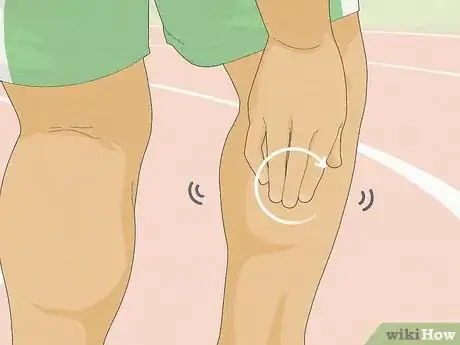

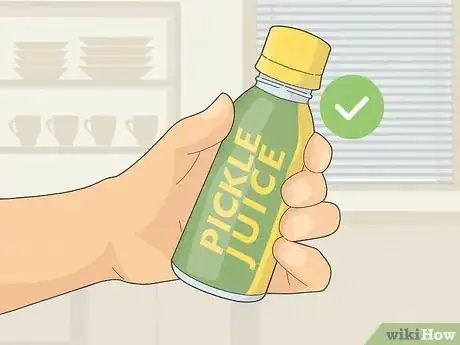
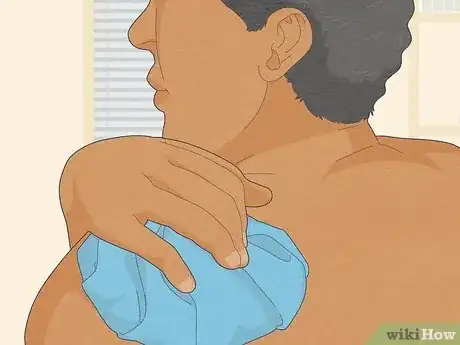
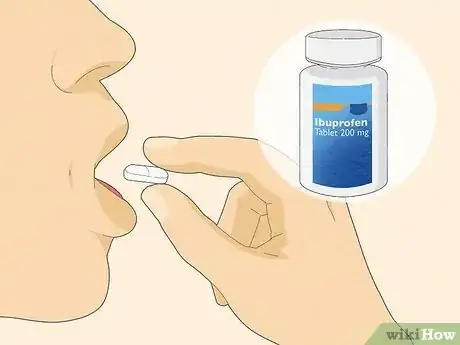
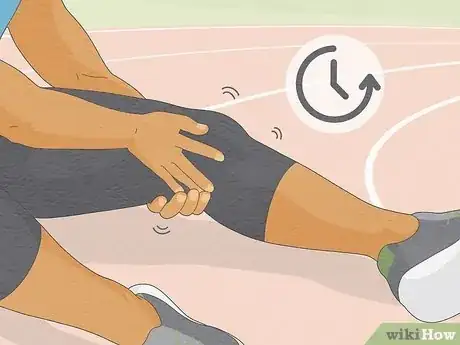

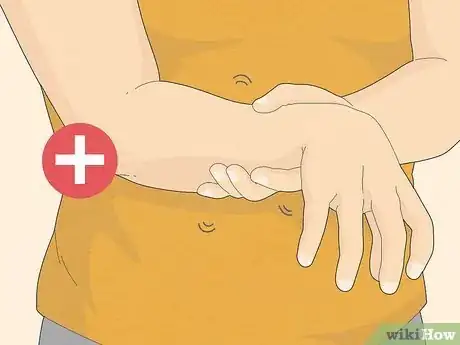

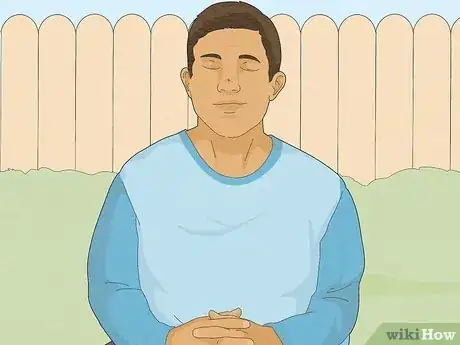
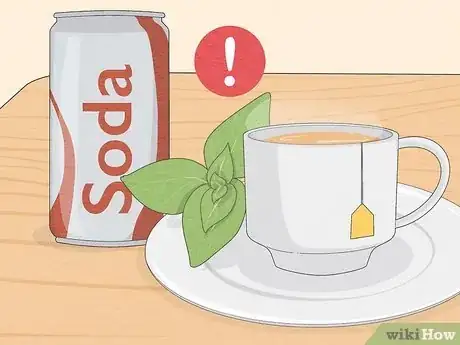
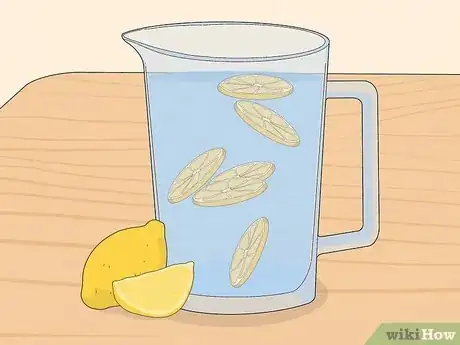
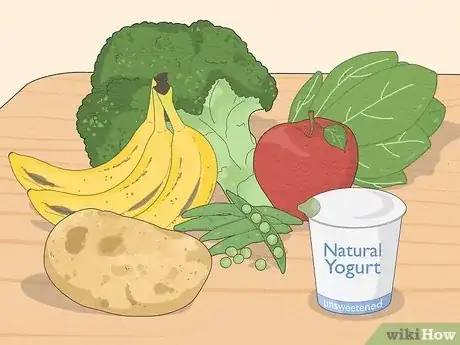
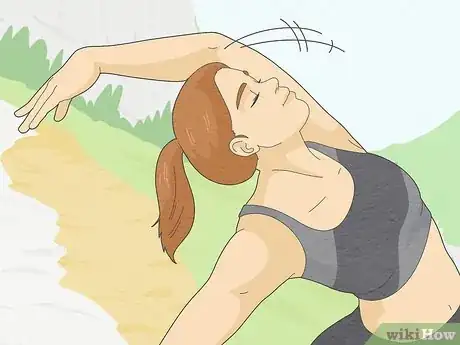
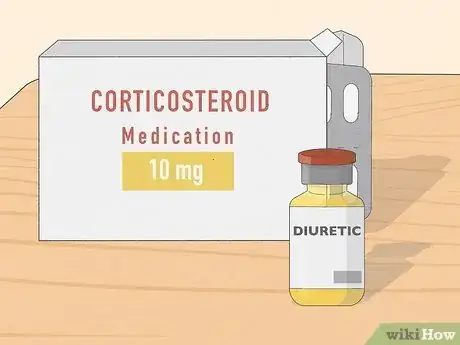
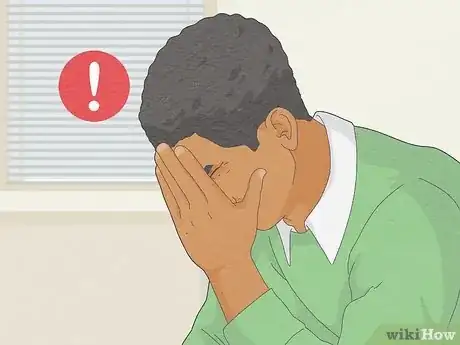
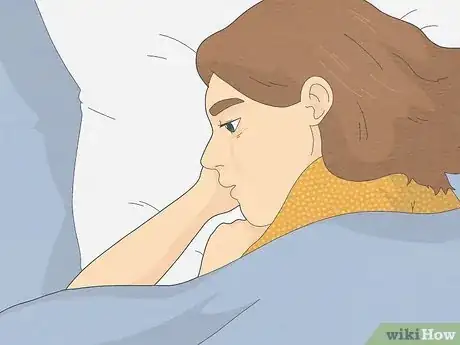
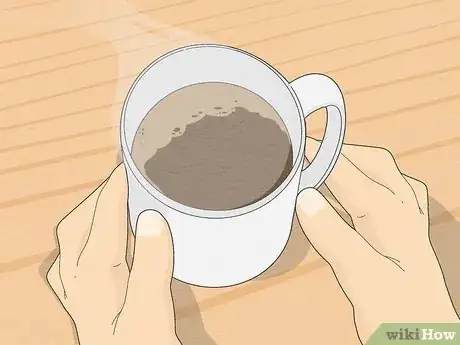

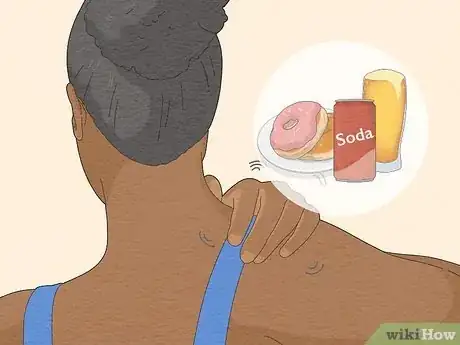

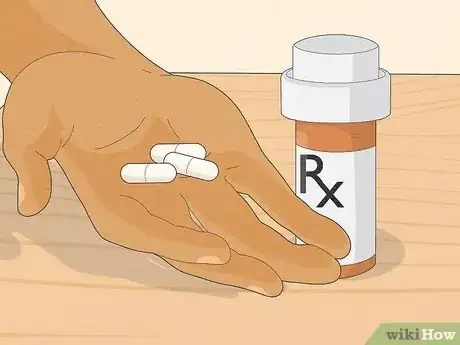
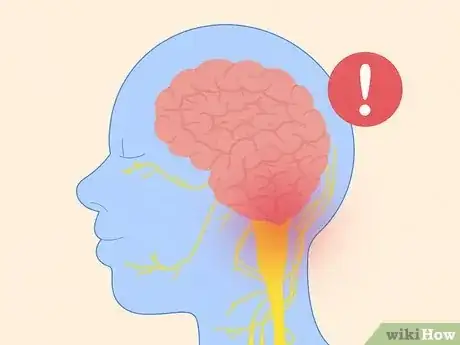
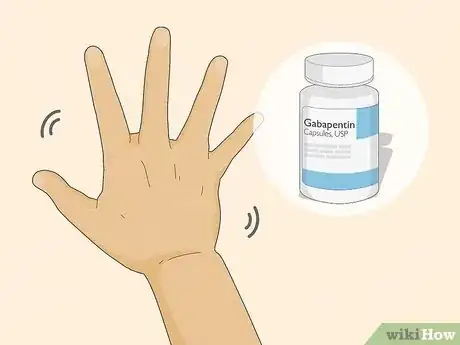
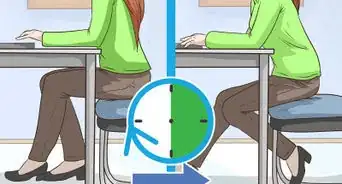
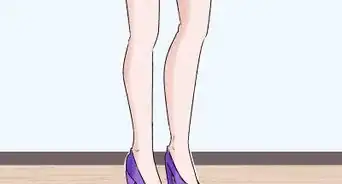
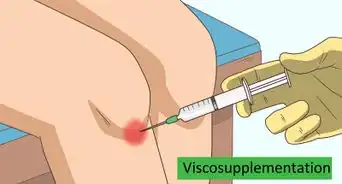
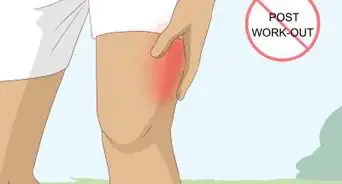
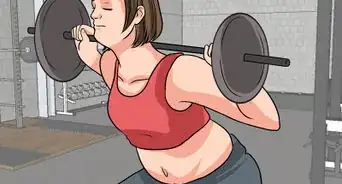
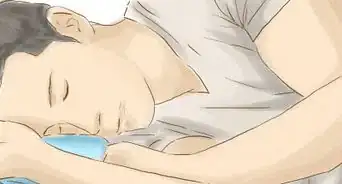

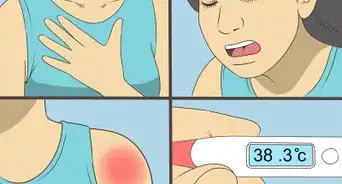

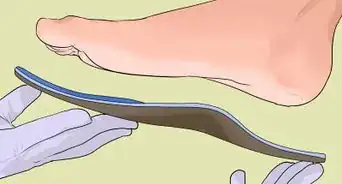

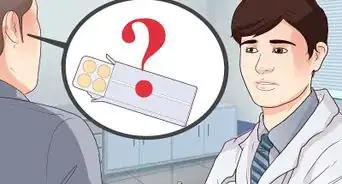
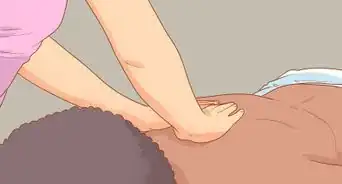







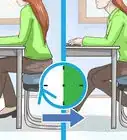

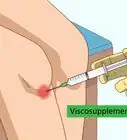
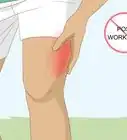



































Medical Disclaimer
The content of this article is not intended to be a substitute for professional medical advice, examination, diagnosis, or treatment. You should always contact your doctor or other qualified healthcare professional before starting, changing, or stopping any kind of health treatment.
Read More...